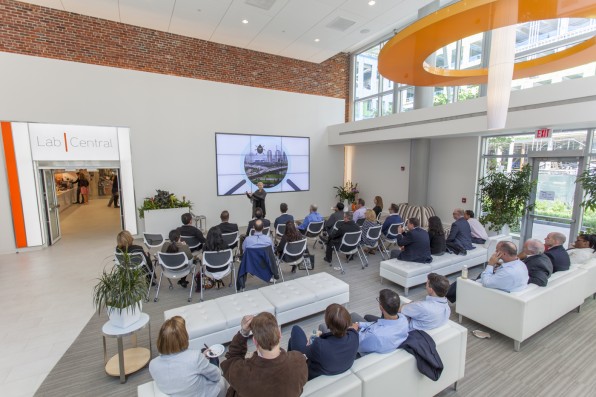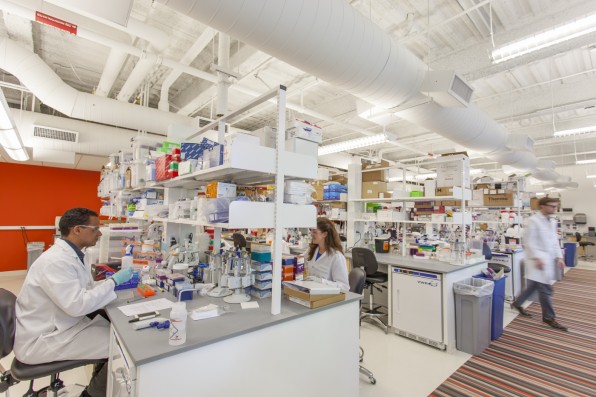Since 1978 when Biogen, a pharmaceutical firm, was established in Cambridge, the Boston Cluster has continued its growth, and especially for the recent decade, its associated sectors have seen a 28% increase in the employment rate. Naturally, global competitiveness has progressed, as well. According to statistics surveyed by Mass Bio, the Boston metropolitan area is currently home to the top 18 pharmaceutical firms and ten medical device companies as well as more than 1,000 biotech firms with a concentration of over 500 firms between Boston and Cambridge.
Against this backdrop, there are excellent human resources and research networks. In Boston, world-famous universities are located such as Harvard, MIT (Massachusetts Institute of Technology), Boston University and Tufts University that nurture and produce the best and brightest human resources in the bio-engineering sector. From 2017 to 2018, the number of students enrolled in only undergraduate and graduate courses of 29 universities in Boston was over 139,000. Throughout the Boston area, 46 percent of residents aged 25 or older hold a bachelor’s degree or higher. Given the national average (30 percent), Boston is indeed a sophisticated pipeline for human resources.

Another strong point for Boston is its sought-after hospitals located nearby. At the Longwood Medical Area (LMA), a world-class medical campus, hospitals and medical institutes are up and running such as Harvard Medical School, Harvard School of Public Health, Brigham and Women’s Hospital, Children’s Hospital, Dana-Farber Cancer Institute, Beth Israel Deaconess Medical Center and Joslin Diabetes Center. The 2.46 billion dollars NIH fundraising outcome in 2018, the most NIH funds raised in the US for the 24 consecutive years by the National Institutes of Health (NIH) Boston, reflects their robust performance. It would not have been possible without the LMA, as echoed in Boston’s funding distribution.
As of 2017, universities topped the list with 72.5 percent among organizations in the States that received the NIH funds, followed by research institutes (9.4 percent), hospitals (8.9 percent), and the private sector (6.9 percent). Unlike such a pattern, hospitals received the most funds (66 percent) in Boston, followed by universities (30.9 percent).
The top three universities that receive the most NIH funds are Massachusetts General Hospital, Brigham and Women’s Hospital, and Beth Israel Deaconess Medical Center among hospitals in the States. In particular, included in the top 20 recipients throughout the US are Massachusetts General Hospital and Brigham and Women’s Hospital. In other words, combined with the aforementioned hospitals, university-based research and NIH funds, robust research activities are carried out in Boston.
Buoyed by enormous capital investments, bio venture capital has grown remarkably. First of all, it is the Massachusetts State Government that has laid solid foundations for Boston over the past ten years. The former Governor, Devel Patrick, invested a billion dollars in Massachusetts Life Science Initiative for ten years to create a biotech complex, raising Boston’s biological capacities a step higher while taking advantage of Mass Life Science Center (MLSC) and Mass Bio as a primary axis. Charlie Baker, the incumbent Governor, re-approved the Massachusetts Life Science Initiative last June, so the growth of the Boston Cluster is expected to continue.
On top of that, come investments of private capital. The size of venture capitals invested in Boston and Cambridge amounted to 616.2 million dollars last year. Combined with the NIH funds, it surpassed one billion KRW.


Not to be missed in the Boston cluster is the example of Professor Bob Langer from MIT, who performed joint research through frequent exchanges with those engaging in pharmaceutical firms, hospitals, universities, venture capital firms and governmental agencies. Active exchanges, including Professor Langer himself and the collaborative ecosystem placed inside the Boston Cluster, have produced from his laboratory 1,250 dissertations and 1,050 patents. Last year, the number of patents applied in the Boston Cluster stood at 7,565, which came in second, following San Francisco Bay.
As one of its biggest competitive edges, the Boston Cluster has strategies and nurturing befitting the hospital-based medical cluster. Based on medical information stored each year in the database at each university, active research activities take place at universities, including MIT and Boston University. Furthermore, the optimum space called LabCentral is a location for new start-ups and is appropriate to connect with clinical trials and pursue joint research, too. Such a robust ecosystem for start-ups leads to the creation of new jobs and revenues that also go back to research costs, creating a virtuous circle conducive to helping the cluster to expand its ecosystem further.
Boston throws a message to individual organizations like companies, hospitals, universities as well as local and national governments regarding this era of bio-economy. As South Korea is forecast to become a super-aged society in 2026, the growth of the biotech industry is indispensable for enhancing the holistic quality of life, including an economic growth rate. Of course, what the Boston Cluster suggests is not just blind imitation. What we need is the emergence of a new bio ecosystem that captures each region’s features, and now is the time to envision what a biotech cluster should look like to take the lead in South Korea.
댓글 정렬